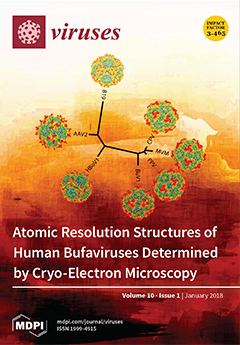Open AccessArticle
Biomarkers of Progression after HIV Acute/Early Infection: Nothing Compares to CD4+ T-cell Count?
by
Gabriela Turk, Yanina Ghiglione, Macarena Hormanstorfer, Natalia Laufer, Romina Coloccini, Jimena Salido, César Trifone, María Julia Ruiz, Juliana Falivene, María Pía Holgado, María Paula Caruso, María Inés Figueroa, Horacio Salomón, Luis D. Giavedoni, María De los Ángeles Pando, María Magdalena Gherardi, Roberto Daniel Rabinovich, Pedro A. Pury and Omar Sued
Cited by 14 | Viewed by 6303
Abstract
Progression of HIV infection is variable among individuals, and definition disease progression biomarkers is still needed. Here, we aimed to categorize the predictive potential of several variables using feature selection methods and decision trees. A total of seventy-five treatment-naïve subjects were enrolled during
[...] Read more.
Progression of HIV infection is variable among individuals, and definition disease progression biomarkers is still needed. Here, we aimed to categorize the predictive potential of several variables using feature selection methods and decision trees. A total of seventy-five treatment-naïve subjects were enrolled during acute/early HIV infection. CD4
+ T-cell counts (CD4TC) and viral load (VL) levels were determined at enrollment and for one year. Immune activation, HIV-specific immune response, Human Leukocyte Antigen (HLA) and C-C chemokine receptor type 5 (CCR5) genotypes, and plasma levels of 39 cytokines were determined. Data were analyzed by machine learning and non-parametric methods. Variable hierarchization was performed by Weka correlation-based feature selection and J48 decision tree. Plasma interleukin (IL)-10, interferon gamma-induced protein (IP)-10, soluble IL-2 receptor alpha (sIL-2Rα) and tumor necrosis factor alpha (TNF-α) levels correlated directly with baseline VL, whereas IL-2, TNF-α, fibroblast growth factor (FGF)-2 and macrophage inflammatory protein (MIP)-1β correlated directly with CD4
+ T-cell activation (
p < 0.05). However, none of these cytokines had good predictive values to distinguish “progressors” from “non-progressors”. Similarly, immune activation, HIV-specific immune responses and HLA/CCR5 genotypes had low discrimination power. Baseline CD4TC was the most potent discerning variable with a cut-off of 438 cells/μL (accuracy = 0.93, κ-Cohen = 0.85). Limited discerning power of the other factors might be related to frequency, variability and/or sampling time. Future studies based on decision trees to identify biomarkers of post-treatment control are warrantied.
Full article
►▼
Show Figures






